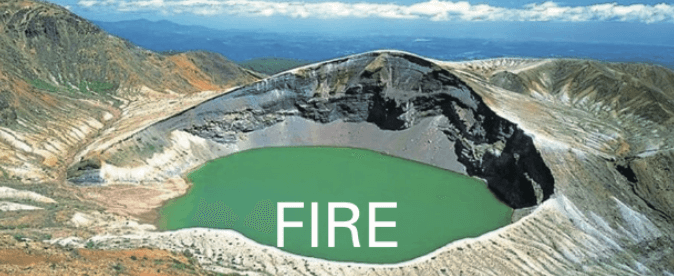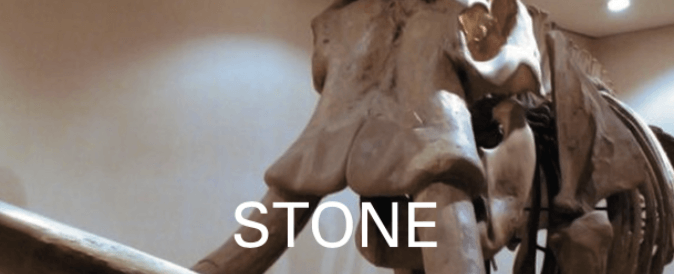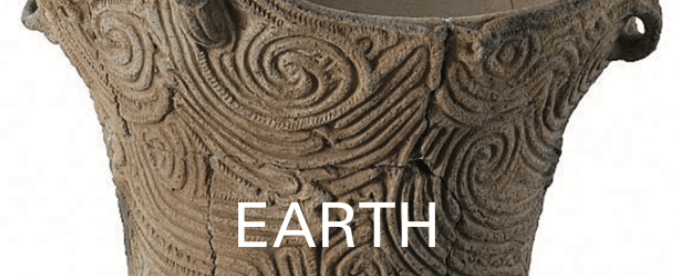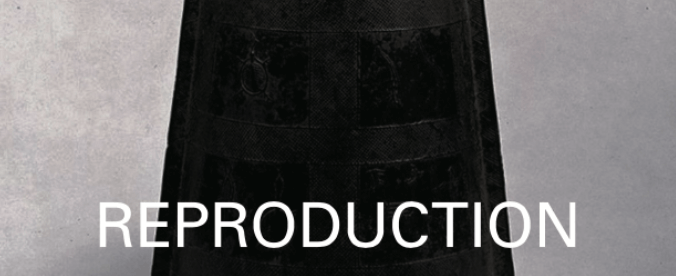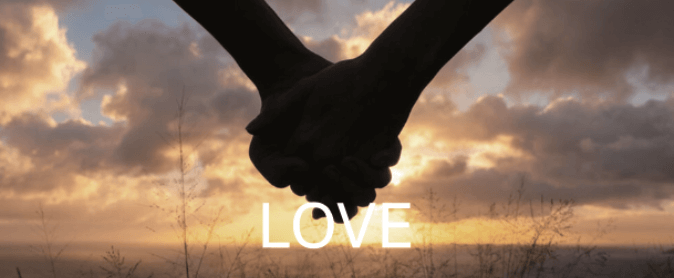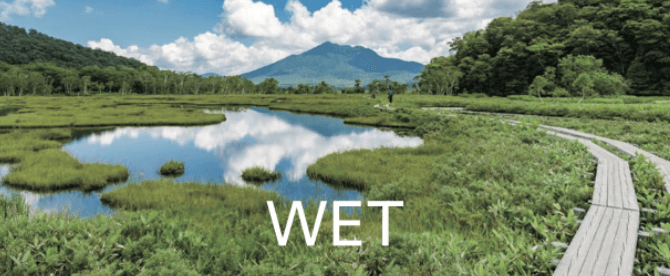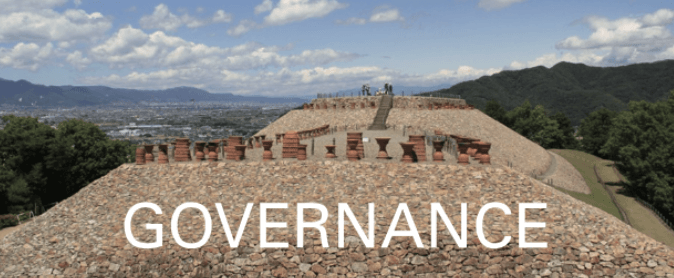
“Mastering the Great Land in ancient Japan” —During the Paleolithic age and Jomon period, 15,000 ‒ 2,300 years ago, the Yura River repeatedly overflowed. Immigrants during the Yayoi period, 2,000 years ago, improved the river stream, developed the land, and started the sericulture industry. No Nation ever emerged without mastering the land.
The museum exhibits relics excavated from the largest burial mound in Kyoto, the Kisaichi Maruyama Tumulus, built in the middle of the 5th century. These include gilt bronze arrow bags, armor, and metal fittings as burial accessories, along with iron farming implements. The burial person was connected to the immigrant, the Han clan. The River stream Improvement and mound construction were connected by the movement of earth and sand.
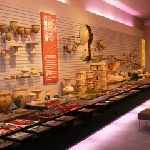
A person rowing a boat — A line-engraved piece of a cylindrical clay figure was excavated from Shimaiyama Tumulus. Shimaiyama Tumulus is a keyhole tomb, with a total length of 190m, was built at the end of the 4th and the beginning of 5th century, the middle Tumulus period (the 3rd – 7th century). It is the largest tomb on the Sea of Japan side.
At that time, this area was a bay with a harbor beside it, and the ancient King of Tango Province was deeply involved in maritime trade. This museum, next to Shimaiyama Tumulus, introduces a real image of the powerful family on the sea, who used to rule Tango Province.

The Yura River pours into the Japan Sea, passing through the Fukuchiyama Basin, where culture from overseas had taken root since ancient times. This shrine is located near the estuary of the Yura River.
The enshrined deities are Izanagi, a male deity who fathered Japan and Kushigokenomikoto (Susano-no-Mikoto, the younger brother of Amaterasu Oomikami: Sun Goddess and mythical ancestress of the Japanese imperial line, and a local deity linked with the harvest and agriculture), the son of Izanagi, a god to preside over plantation and agriculture, which were transferred the separated spirit to this shrine from Izumo Kumano jinja shrine, Shimane.
This shrine used to consist of Uenomiya, Nakanomiya, Shimonomiya, the three buildings of the shrine complex were built on the different level grounds. They were joined by Nakanomiya in 1711. Yura, which had a mountain faith since ancient times, was an important gateway from the Japan Sea.
The marine clans aimed for the Fukuchiyama Basin from Yura.
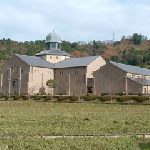
This museum is the center facility of the hill of Ohmi Fudoki, the description of Japanese regional climate, culture, and others. This museum introduces special historic sites, including Azuchijo, the site of Kannojijo castle, Hyotanyama tomb, and Dainaka no Kominami, the early agricultural settlements in ancient times.
This museum exhibits excavated archaeological materials and historical and art materials related to Oda Nobunaga (1534 – 1582), the legendary warlord and the military dictator and his vassals at all times.
—Azuchijo Castle was built on Mt. Azuchiyama like a cape that protrudes into Lake Biwa. Its interior was decorated with black lacquer and splendid wall painting.

The Biwa Lake has a 4 million year history and more than 1,000 species of flora and fauna, including endemic species. At this center, various ecosystems can be observed. The life of the lake is up to tens of thousands of years, due to the accumulation of earth and sand from the river.
The Ancient Biwa Lake was at the foot of the Suzuka Mountains in Mie prefecture, and sometimes turned into a river and moved to the north. It was in its current position and became the current shape 400,000 years ago.
The lake symbolizes the Japanese archipelago, which has changed its form over time and continues to exist for a long time.
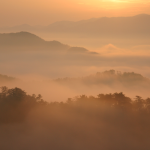
The basin of Tanba Sasayama used to be the bottom of the ancient lake, where red waves flooded. Tan (Tan sand) from Tanba is mercury. In ancient times, it was a precious mineral used for vermilion, gold plating, dyes, and pigments, to decorate the amulets and the Buddhist statues.
It was said “those who command Tanba Province would reign”, from ancient times to Akechi Mitsuhide (1528 – 1582): a feudal lord, a general under Oda Nobunaga (1534 – 1582), the legendary warlord and the military dictator. Mitsuhide rose in rebellion against Nobunaga in 1582, in the early modern times.
The waves of fog that flow into the basin awaken ancient memories.
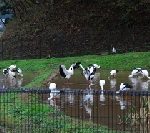
The Oriental White Stork is an East Asian bird that breeds in Northeastern China and the Amur River basin and passes the winter mainly in Southern China.
Although it had also lived in the Japan archipelago until the Edo period (1603 – 1868), it was threatened with extinction, due to excessive hunting and was designated as a national special natural monument. It appeared last around Toyooka City Hyogo Prefecture in 1971, and disappeared from the sky in Japan.
Artificial breeding stared in 1965, and this park is engaged in research on protection, breeding, expanding the breed, and reintroducing them to the wild, and working on an environment creation project that can coexist with storks.
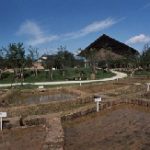
“This site is layered with Jomon and Yayoi” -This site is very unique. Above a site of rice farming from the final Jomon period, 3,000-2,000 years ago, there is the site of wet-rice farming, from the beginning of the Yayoi period, 2,000 years ago. The variety of the rice is the same as in South China. Ancient travelers came here!
This site is the oldest wet-rice farming site in the southwestern part of Karatsu City, which shows the beginning of ancient civilization in Japan. The Tsushima site are the ruins of the era when full-scale rice paddy cultivation began. Rice existed in the Jomon period (16,000 years ago – 3,000 years ago) and there were paddy fields in its late period. In the Yayoi period (the 4th BC – 3rd century), ridges for adjusting the details of the plot were made to improve the efficiency. And tools were improved, productivity was increased, and circular moat settlements were established, leading to the development of a large-scale base village.
Eventually, a large-scale mound tomb was built and exchanges with various places became popular. Matsurokan Museum introduces and explains well the origin and spread of rice farming from the Eurasia Continent, which had been connected by the Kuroshio, the Japan Current, since the Jomon period (16,000 years ago – 3,000 years ago).
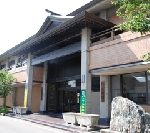
This museum is located at the foot of Mt. Kagamiyama (Height 284m) and near Kagami Shrine where it is said that Empress Jingou dedicated a mirror for the victory prayer when she went to the Korean peninsula.
This museum exhibits excavated items at the Nabata site which is the oldest rice cultivation site in Japan (about 2,500 years ago), the Kuri Sosui tomb, one of the oldest keyhole tombs in Japan in the early part of the Tumulus period (3rd – 7th century) and at the main ruins of Karatsu area to convey the richness of ancient times.
This museum tells us the real image of the country of Matsuro, registered in the first History of Japan, Gishiwajinden, an Account of the Wa, the history of the Wei Dynasty 3rd century, and Matsuura county in Nara era (710 – 794).
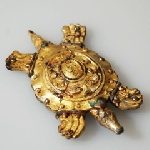
This museum is built on a small hill overlooking the Harunotusuji site, which is designated as a National special historic site. This museum exhibits approximately 2000 valuable properties and materials excavated from this island, including the Harunotsuji site.
“The Site of the capital mentioned in a 3rd Century Chinese history book” -The Chinese geography and history book from the 3rd century, Gishiwajinden, is the oldest record mentioning Japan. There are detailed descriptions of the nation states of Iki. Here are the combined treasures of mirrors, swords and jewels excavated at the state capital of Iki, the Harunotusuji site.
Iki Island is 17km north-south and 15km east-west. It is located in the Genkai-nada Sea between Kyushu Island and Tsushima Island. This museum displays many Chinese continental items and introduces the capital of the kingdom, which is the only place identified in Gishiwajinden.
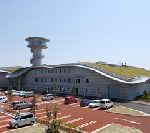
Kasen copper coin has a square hole in the circular form. Wan Mang (45BC – 23AD), who founded the Xin Dynasty, made it, in 14 AD. The National historic site, the ruins of Harunotusuji is in Iki, Nagasaki.
On the west side ruins of the hillock, a river channel, circular moats, pillar buildings and dug out holes were found. The Mumun pottery period in the Korean Peninsula and Yayoi pottery which were discarded together, were excavated from dug out holes.
Kasen copper coins along with earthenware, a carriage tool from the Lelang Commandery of the Korean Peninsula, an Iron hammer, a plate shaped Iron Axe, and an Iron Chisel, were excavated from the dug out holes. Kasen coppers were excavated from dug out holes, along with the river channel.

This center shows the natural scenery of Yakushima. Jomonsugi cedar, estimated to be from 2,000 to 7,200 years old with ancient memories, and the nature of Yakushima Island are featured on a large-scale screen.
The white and beautiful Nagata Beach is wide, where the loggerhead turtle lands and lays the largest number of eggs in Japan. This Beach is also registered as one of Ramsar Convention sites. The center also introduces the relationship between the sea turtle, Kuroshio, the Japan Current, and Yakushima.
